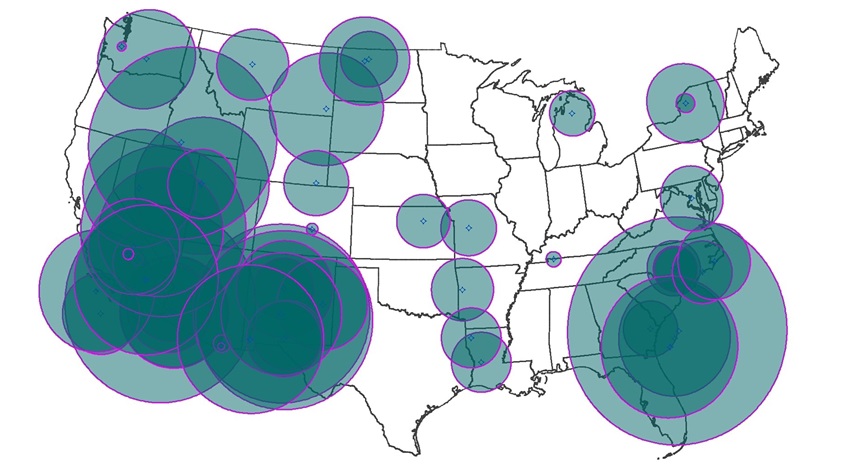GPS testing to degrade signal
Southeastern U.S. affected again
GPS aerial navigation could become unreliable or unavailable again over the southeastern United States and adjacent coastal waters during a U.S. Navy exercise that will involve GPS interference testing this Friday, Aug. 30, and next Thursday, Sept. 5.
The FAA issued a flight advisory Aug. 27 for the testing, which will be centered in the Atlantic off the Georgia coast, on the SAV VOR’s 139-degree radial at 84 nautical miles. It could affect GPS reliability at 50 feet agl within a 127-nm radius; at 4,000 feet, within 197 nm; at 10,000 feet, within 242 nm; and at Flight Level 250, within 307 nm. At and above FL400, GPS signal accuracy could be affected anywhere. The tests are scheduled for 1800 Zulu to 2200 Zulu on Aug. 30, and 1600 Zulu to 2000 Zulu on Sept. 5.
GPS interference testing can be expected to affect Automatic Dependent Surveillance-Broadcast as well. The FAA clarified in a July policy statement that aircraft operators who encounter GPS interference will not be held responsible for a GPS performance failure that results in noncompliance with the ADS-B rules. If a scheduled GPS-interference event is the only anticipated impediment to ADS-B compliance, the FAA said, an operator should proceed with the planned flight.
“This GPS interference supports a carrier strike group in the Atlantic and is important for military training and testing,” said Rune Duke, AOPA senior director of airspace and air traffic. “However, AOPA and airlines continue to raise concerns about the effect regular GPS interference has on safety and efficiency. The VOR minimum operational network was not envisioned to be needed on a daily basis to offset what has now become routine GPS interference. We are concerned the FAA is not adequately accounting for the safety and efficiency impacts of what is now common military activity across much of the United States.”
AOPA has been working at many levels to increase the focus on civil aviation safety as GPS interference-testing events proliferate, Duke said. The growing number of tests is resulting in increased pilot complaints, and he expects them to increase further as more pilots shift to GPS-based navigation and the FAA’s ADS-B Out mandate takes effect Jan. 2, 2020.
Pilots who experience any loss of GPS capability should inform air traffic control immediately, and file an anomaly report if they lose any capability using the FAA’s GPS Anomaly Reporting Form.
And pilots who encounter a hazardous interruption of GPS navigation—resulting in flight control issues or other safety-of-flight concerns, for example—should say the phrase “Stop buzzer” to ATC, Duke emphasized. Doing so will begin the process of interrupting the GPS interference testing and restore normal GPS signal reception, he explained. If a pilot is not communicating with ATC, he or she can use the 121.5-MHz emergency frequency.
“Pilots should only say ‘stop buzzer’ when something unsafe is occurring that warrants declaring an emergency,” Duke said. “They should make sure ATC knows that the emergency is GPS-related and that halting the GPS interference could resolve the emergency.”





